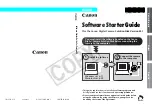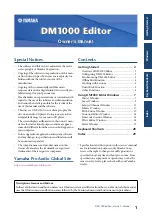
Current PSPI Functions
Proprietary & Confidential
73
UpdateNumGrpRList()
Stored procedure for assigning number groups to routing lists. To be used
only
after using
to change a routed system to
non-routed. Refer to the description of that procedure and especially to the
cautions it contains.
When a routed system is converted to non-routed, the existing bridge groups
and routing lists are deleted. The conversion process creates new bridge
groups and routing lists that have a one-to-one relationship to the bridges.
That is, each new routing list contains one bridge group that contains one
bridge. Using this procedure, you must assign each number group to one of
the new routing lists so that its access numbers are tied to a single bridge.
Each new routing list ID is the same as the bridge ID of the bridge to which it’s
tied. So, to associate a number group with bridge ID 3, assign it to routing
list ID 3.
You can assign up to ten number groups to routing lists in one SPC. To assign
fewer than that, set the parameters you’re not using to
0
. All the number group
IDs and routing list IDs that you specify must exist in the database.
Parameters
Specify all parameters. The constraints column shows specific value or range
constraints. For syntax rules and constraints applicable to all parameters, see
Parameter
Data Type
Constraints
Description
vNumGroup1 INT >0
Number Group 1.
vRoutingList1 INT
>0
New routing list ID for number group 1.
vNumGroup2 INT
Number Group 2. Set to 0 if not assigning
another number group.
vRoutingList2 INT
New routing list ID for number group 2. Set to 0
if not assigning another number group.
vNumGroup3 INT
Number Group 3. Set to 0 if not assigning
another number group.
vRoutingList3 INT
New routing list ID for number group 3. Set to 0
if not assigning another number group.
vNumGroup4 INT
Number Group 4. Set to 0 if not assigning
another number group.
vRoutingList4 INT
New routing list ID for number group 4. Set to 0
if not assigning another number group.
















































